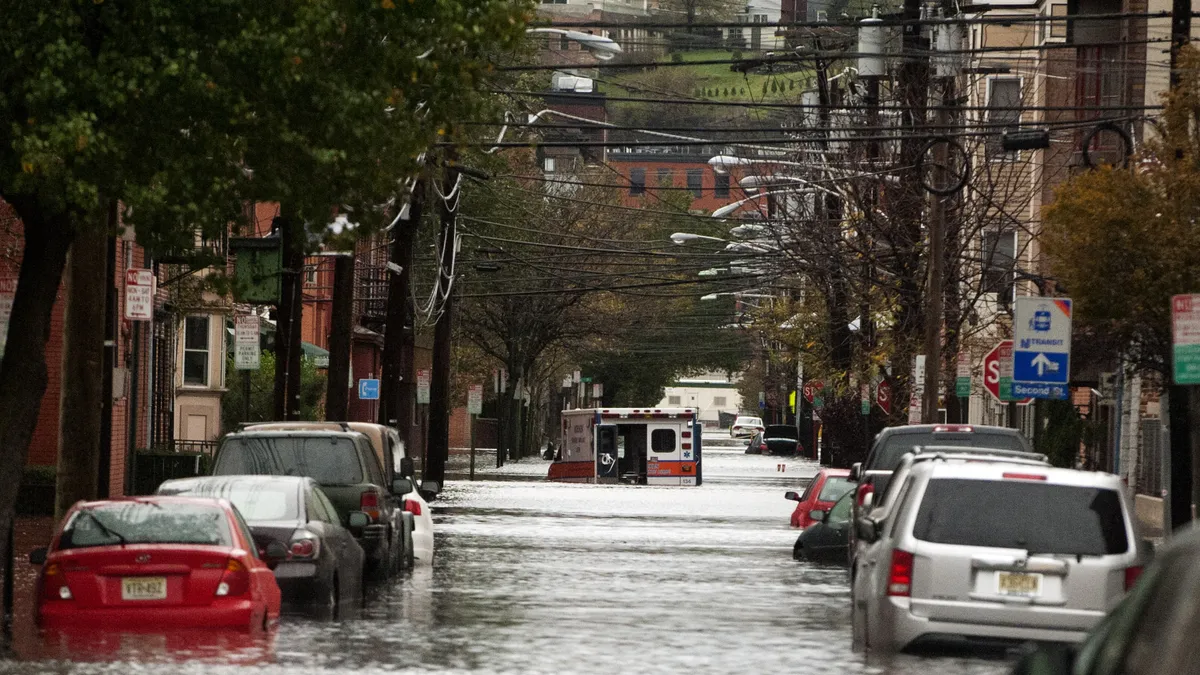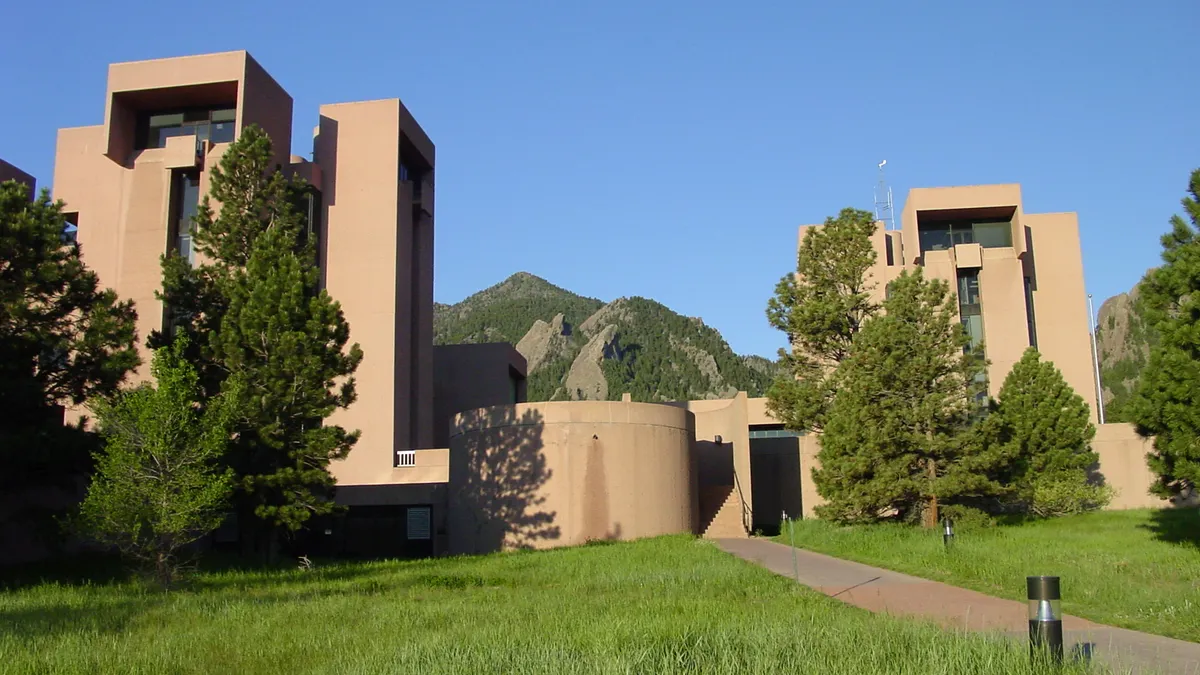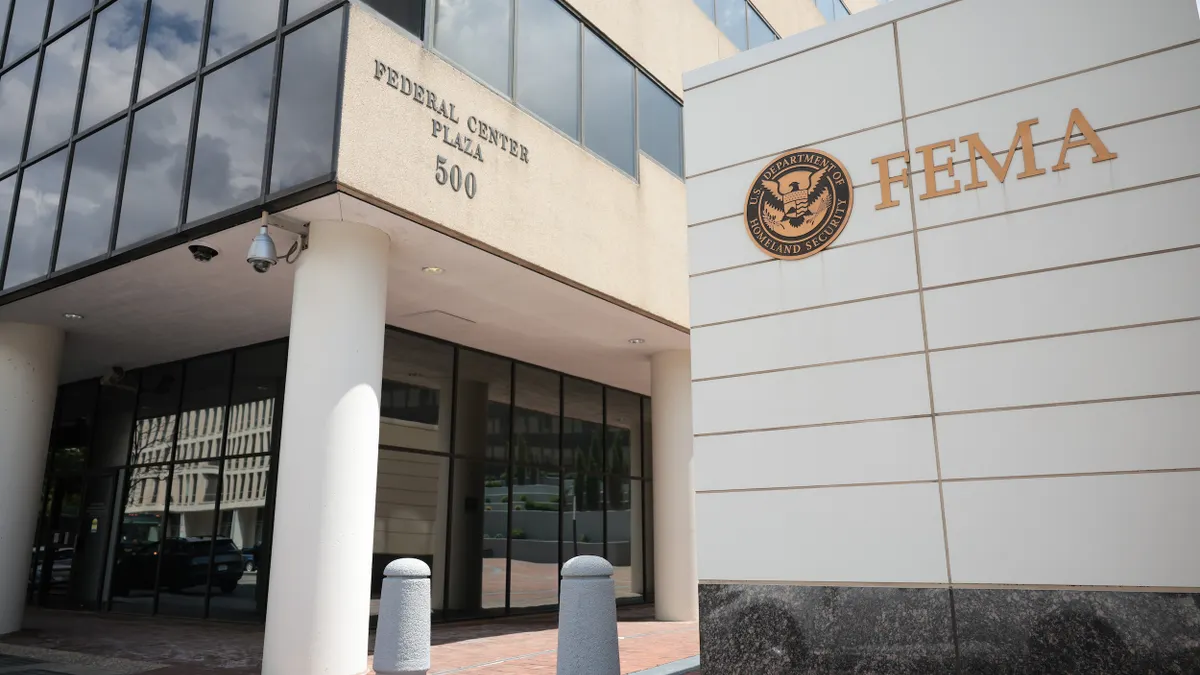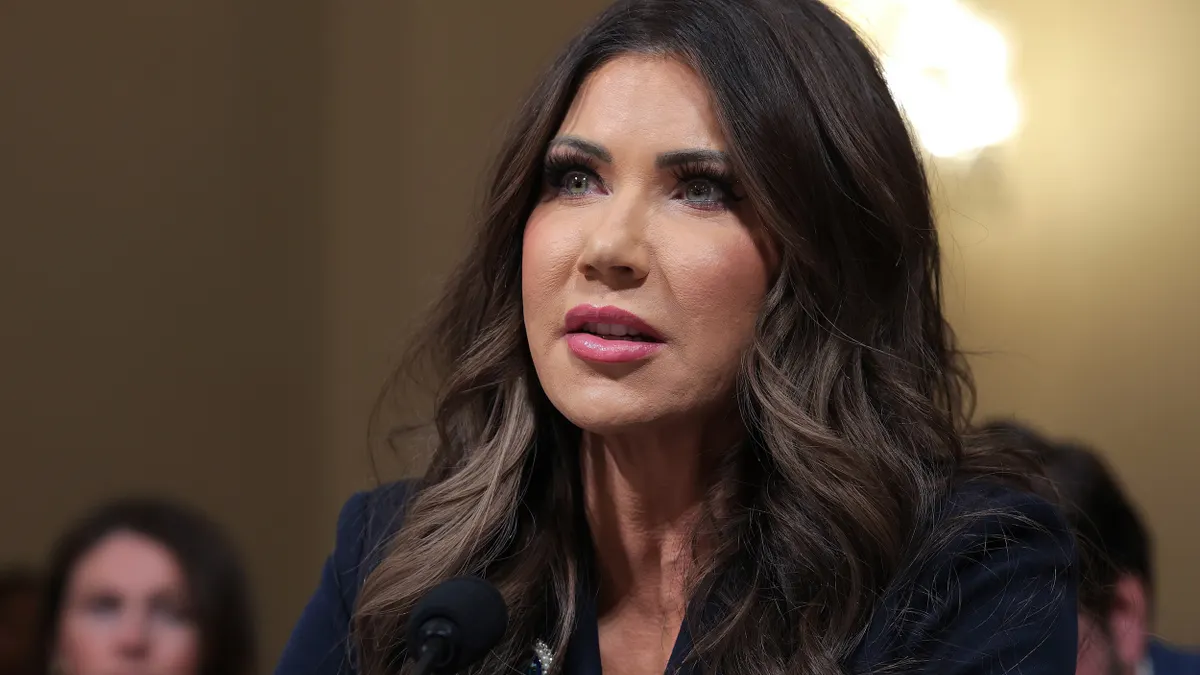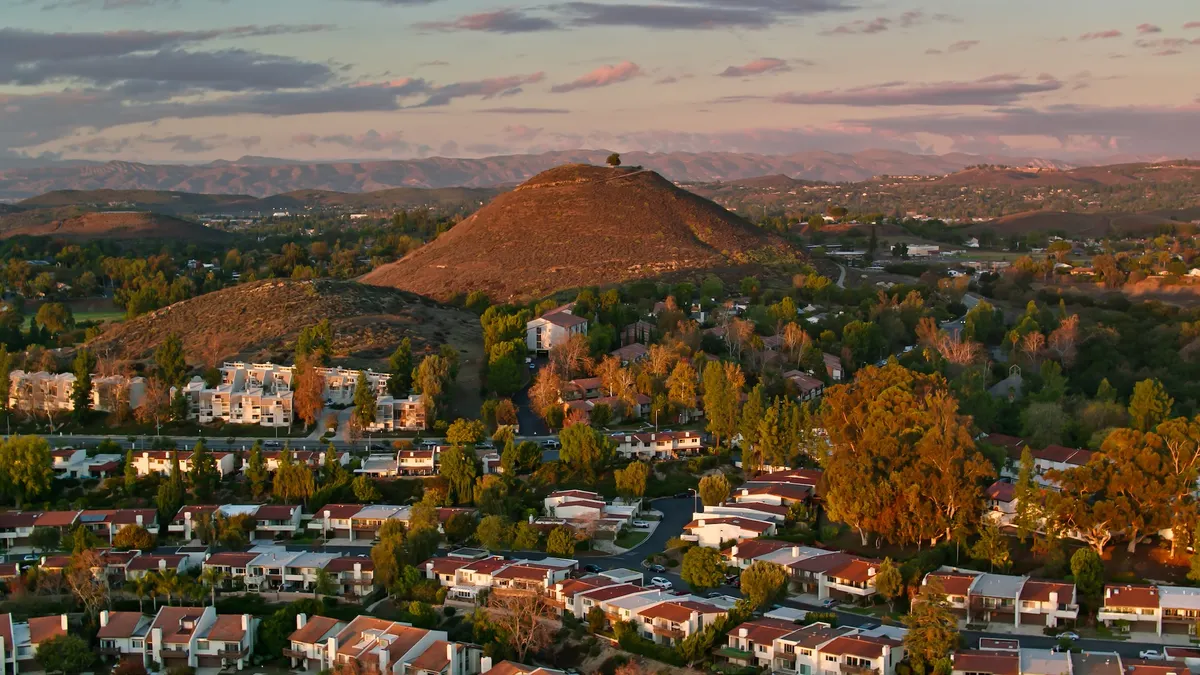Hoboken, New Jersey, is deeply familiar with the effects of global warming. As a coastal city along the Hudson River in the New York metropolitan area, Hoboken is affected by worsening rainfall. It received a federal grant to install a levee after 2012’s Hurricane Sandy.
In 2017, Hoboken declared a climate emergency, making it the first U.S. city to do so.
“We declared this emergency as a recognition that we've been adapting to the effects of climate change for so long – since, I would argue, probably about 2010,” said Jen Gonzalez, the city of Hoboken’s director of environmental services and chief sustainability officer. “But we then realized we need to go beyond adaptation and look at mitigating our contribution to climate change.”
The city is now working to reduce its greenhouse gas emissions to lessen the adaptation required in the future, Gonzalez said.
Hoboken is one of many cities that have enacted declarations in recent years that address ongoing societal, economic and environmental issues. The city council in Evanston, Illinois, recently approved a climate emergency resolution. Milwaukee County, Wisconsin, and New York City passed declarations declaring racism as a public health crisis. Portland, Oregon, and Miami-Dade County, Florida, have announced emergencies around housing and affordability.
Whether these announcements are more public relations or a catalyst for real change depends on the local government and its follow-through.
Climate change as a policy priority
Hoboken’s declaration pushed the city to develop a climate action plan and take inventory of greenhouse gas emissions. It completed that work two years after the declaration passed.
Gonzalez said the inventory identified that residential and commercial energy consumption were together the highest source of greenhouse gas emissions in Hoboken, so the city took steps toward a more renewable energy supply. Measures have included transitioning to 100% renewable electricity for municipal facilities and launching a program for residents that powers homes using 10% more renewable energy than the state requires. It also gives homeowners the opportunity to opt for up to 100% renewable electricity. Further, the city launched a community solar program that enables low- and moderate-income residents at the Hoboken Housing Authority to access solar energy, generated by a rooftop installation at a nearby warehouse.
Having a climate resolution on the record shows that city leadership values climate action, Gonzalez said.
“This is something that we're committed to putting resources [to],” she said.
Many cities have followed Hoboken’s example and enacted their own climate declarations. But in Minnesota, more than a dozen cities have banded together.
The Minnesota Cities Climate Caucus was formed so local elected officials could share policy best practices and have more influence at the state level around climate change. Larry Kraft, who organized the caucus, recalled a range of extreme weather events in recent years, including drought, rising temperatures and some summer days when wildfire smoke prevented people from going outside.
A declaration involving many Minnesota cities would be an opportunity to mobilize around the crisis, said Kraft, who is councilmember at large in St. Louis Park, a suburb of Minneapolis.
“There's many individual cities doing it,” he said. “But if we all did it together or many of us did it at the same time, we'd have a bigger impact both within our own communities to spur additional action and visibility, but also in terms of the goal of having more influence at the state level.”
Earlier this year, a group of 18 Minnesota cities plus one county signed onto the declaration, said Kraft. It includes rural as well as suburban cities, which helps cut across the urban-rural divide, he said.
Though the resolution template gives cities ideas for actions they could take based on a community’s needs, there are no formal powers. Kraft said having so many cities sign onto a binding declaration would have taken more time and left less flexibility for city-by-city customization.
One of the goals of the declaration is to get more funding and technical support from the state, Kraft said. Some smaller cities don’t have a sustainability manager on staff, he said.
Kraft’s city has launched several initiatives. St. Louis Park gives extra incentives to people who install solar, which has increased the community’s solar capacity, he said.
Residents also have access to a home energy audit, in which a professional from the nonprofit Center for Energy and Environment visits a resident’s home to make energy efficiency improvements. They seal doors, replace lightbulbs, install low-flow showerheads and generate an energy report, said Kraft. The service costs between $35 and $50, thanks to St. Louis Park contributing toward the program.
Kraft said commercial uses account for about 60% of emissions in the city, so another program gives businesses access to a free energy audit.
Governments declaring a climate emergency isn’t new. For example, the Kyoto Protocol of 1997 was an international agreement to reduce greenhouse gasses. But Rushad Nanavatty said it’s different now. Whereas political movements drove declarations such as Kyoto, declarations now come from people experiencing the effects of climate change through heatwaves, flooding and other events, said Nanavatty, managing director of urban transformation at the Rocky Mountain Institute.
“It's all very, very in your face right now. And I think that's the one thing that maybe distinguishes this from past moments where you've seen kind of a surge in declarations,” said Nanavatty. “It's been tied to the fact that cities, communities everywhere in the world are now seeing and feeling the impacts very, very directly. Climate change is no longer an abstraction really to anyone.”
Declarations are necessary to signify a commitment from leadership and give city workers a mandate to do things differently, he said. Turning those commitments into real action is harder.
The mayor or city council makes the declaration, but it’s really up to the city’s energy manager or public works or another department to figure out how to execute on the goal, Nanavatty said.
For example, a public works department that needs to resurface roads would typically use the lowest-cost asphalt. If the climate becomes a priority, Nanavatty said the department would more likely opt for a solution that reduces urban heat island effect or helps with stormwater management.
But often after a big declaration, city staff are left with little funding and technical knowhow.
“The leadership declaration matters because it kind of helps rally the troops. It signals to each one of these departments within a city that this is a priority,” Nanavatty said. “But that's not the same as actually embedding climate logic.”
Holding cities accountable for housing goals
San Diego has the fifth largest population of homeless people in the U.S. The city declared an ongoing shelter crisis in 2017, again in 2019, and yet again earlier this year. It allows the city government to suspend some housing, health and safety laws in order to create more shelter for unhoused residents.
But San Diego’s city council president doesn’t think a declaration is a solution so much as a way of mitigating harm.
“It's a public policy failure that we need a declaration like this in order to respond to a shelter crisis,” said Sean Elo-Rivera. “Multiple things have to have gone wrong from a public health policy perspective, from a societal perspective that leaves us in a position where the best thing that we can do in the moment is radically cut red tape to create shelter opportunities.”
The declaration gave San Diego the ability to quickly turn Golden Hall, a convention center next to city hall, into a shelter, Elo-Rivera said. It also increased the amount of city-funded shelter. Compared to 2017, the number of beds has nearly tripled to the current count of 1,468 beds, according to data provided by the city.
He said the declaration has value beyond making it easier to create shelter. It also provides a benchmark by which residents can hold city officials accountable.
“When a city takes action and puts its name on something, it creates a different level of accountability,” he said. “If we are not making sufficient progress, specifically with shelter, I think this does provide [residents and advocates] a tool to say, 'Look, you've put your name on this. You declared a shelter crisis. Why are you not taking more definitive action to address that crisis?'”
Maxwell Palmer, associate professor of political science at Boston University, said a declaration can bring attention to an issue such as housing. It also tells activists that their concerns are being taken seriously.
But whether a declaration garners more than short-term media coverage depends on the city and what it does next.
“Mayors give speeches all the time with policies and priorities,” Palmer said. “But going from talk to action is complicated, and there's a lot of barriers in the way. And I'm not sure if a declaration is any different than any other kinds of speech.”
How declarations can go beyond conversation starters
To make sure declarations produce more than just talk, cities need to follow through with action.
Kraft said the Minnesota Cities Climate Caucus continues to meet monthly and track progress. He’s hopeful the state will pay more attention. There’s a state bill that, if passed, would provide $5 million in grants for cities’ climate action plans. Plus, the heads of several state-level committees have attended caucus meetings, which Kraft said didn’t happen before the declaration.
“It's not a one-and-done kind of thing,” he said. “You have to understand why you're doing it and keep focused on it and follow up.”
City leaders also need to communicate with residents about what the city government has accomplished, Elo-Rivera said.
Gonzalez from Hoboken stressed the importance of community engagement. In one instance, the design of a flood mitigation project changed when residents raised concerns over it blocking Hoboken’s waterfront views.
Nanavatty said governments must be willing to expend real political capital on substantive action that faces opposition.
“Very few people are going to object to a high-level declaration on the importance of climate action,” he said. But reforming zoning policy, ending highway expansions, giving more street space to public transit and calling out poor utility planning decisions often anger a lot of people and industries.
“Those are the kind of things that will result in a really, really big impact and require a hell of a lot more political courage and political capital than the declaration.”


